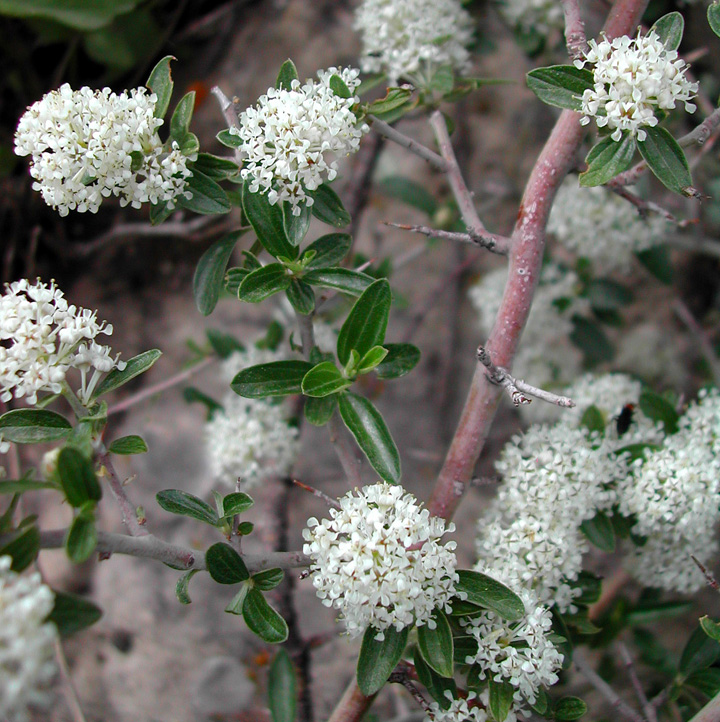
|
Family: Rhamnaceae |
PLANT: Shrubs, armed or unarmed. STEMS: spreading to erect, green-brown to gray, pubescent to glabrous. LEAVES: evergreen or deciduous, alternate or opposite, entire or dentate, acute to rounded, palmately to pinnately veined. INFLORESCENCE: of cymose panicles. FLOWERS: perfect, pedicellate; sepals 5, white to light blue or purple; petals 5, 3-5 mm long, long-clawed, white to light blue or purple. FRUITS: 3-chambered capsules, green maturing dark brown to black, globose, roughened; seeds 1 per chamber. NOTES: Ceanothus is prized as a honey plant, and is used medicinally and ceremonially by many native American tribes (Moerman 1998). Many species of Ceanothus have been cultivated as ornamentals, most commonly known as wild-lilac or mountain-lilac. -62 spp. in N. Amer. (4 in AZ). REFERENCES: Kyle Christie, Michael Currie, Laura Smith Davis, Mar-Elise Hill, Suzanne Neal, and Tina Ayers, 2006 Vascular Plants of Arizona: Rhamnaceae. CANOTIA 2(1): 23-46. Sep inflexed, at length deciduous above the hypanthium; pet long-clawed, in bud incurved with the infolded sides of the broad blade clasping the anther, at anthesis spreading or deflexed between the sep; stamens at anthesis free and exsert; ovary 3-angled and 3-locular, immersed in the disk; style 3-lobed; fr a 3-lobed capsule-like drupe subtended by the persistent hypanthium, the exocarp thin, dark, coriaceous, the endocarp eventually loculicidally dehiscent; shrubs with alternate,
3-nerved, glandular-serrate lvs and numerous small white (in our spp.) to blue fls in sessile or short- peduncled umbels aggregated into terminal or axillary pedunculate panicles. 55, N. Amer. Gleason, Henry A. & Cronquist, Arthur J. 1991. Manual of vascular plants of northeastern United States and adjacent Canada. lxxv + 910 pp. ©The New York Botanical Garden. All rights reserved. Used by permission. |
This project was made possible in part by the Institute of Museum and Library Services [MG-70-19-0057-19].
Powered by Symbiota



